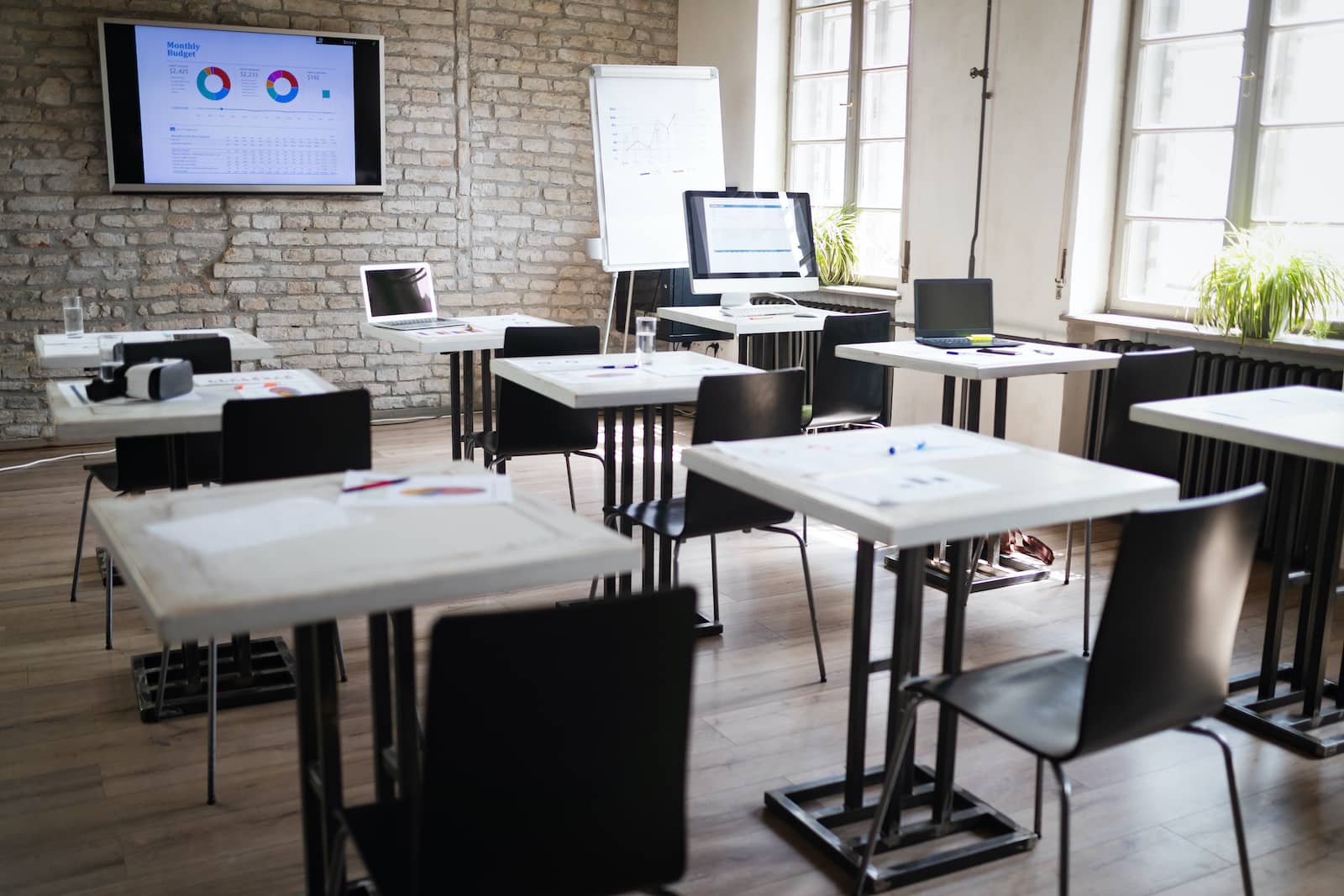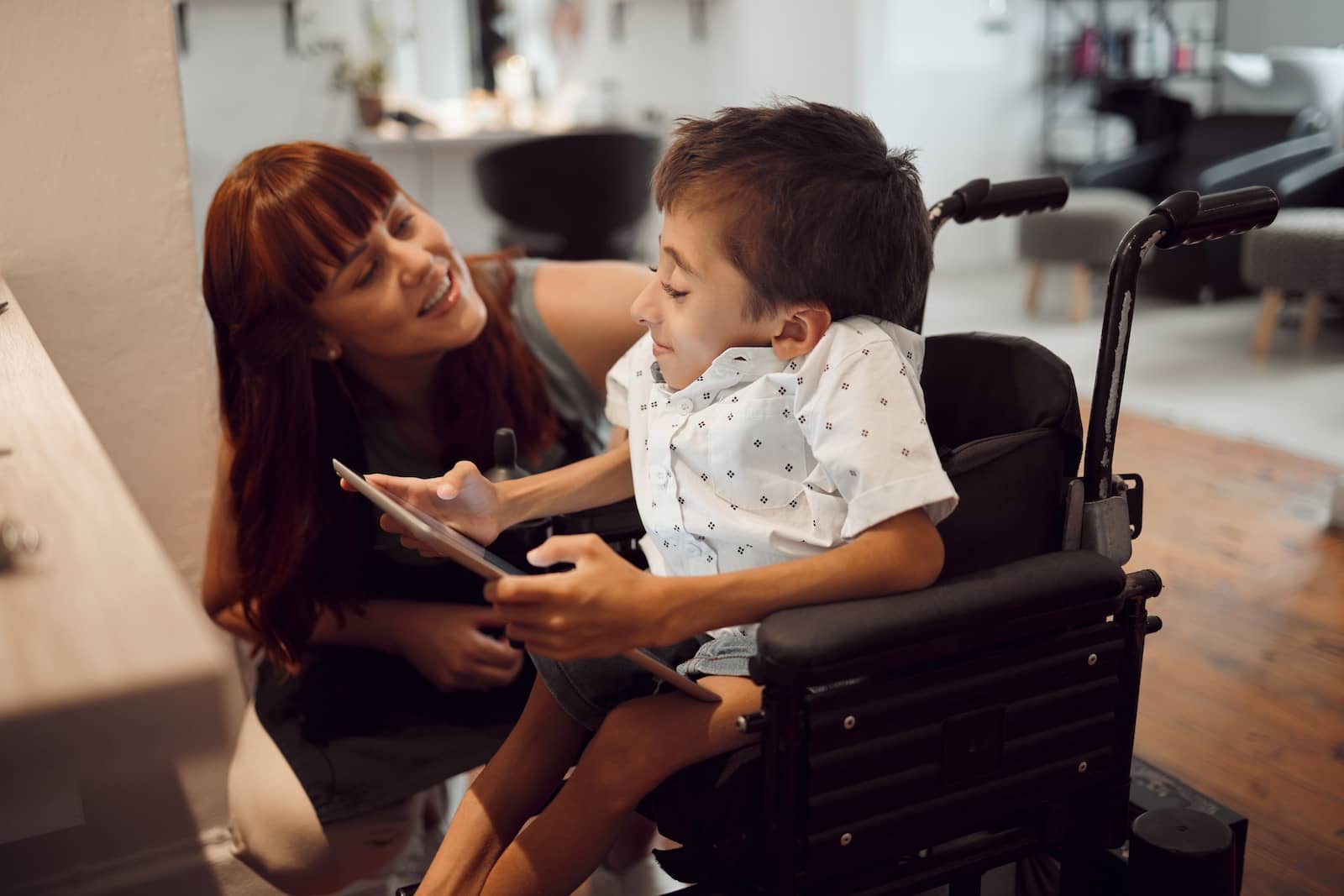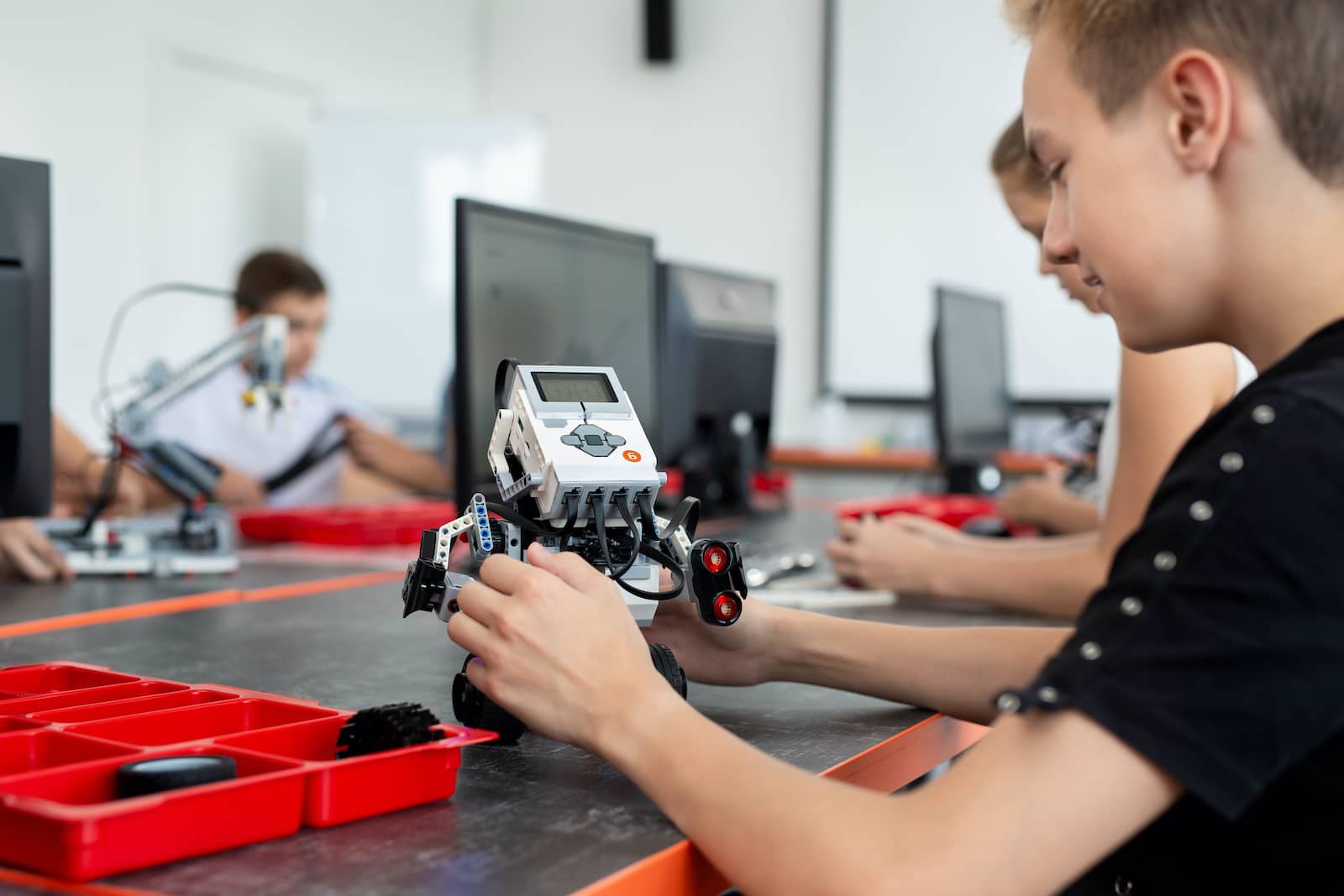No products in the cart.
PoE Solutions in Education
The last three years have accelerated a trend that was already on the rise— modern, effective education is impossible without the right technology behind it to provide the necessary infrastructure. With the right strategy in place, power over Ethernet (PoE) solutions in education can create that infrastructure to improve online and classroom learning, safety, and more.
In education, connectivity is proving to be the great equalizer. Connectivity has the potential to ease access for anything from primary to postsecondary education, assisting anyone from young children to aspiring professionals with learning what they need to know to reach their full potential.
Education has always been core to a functioning society. But over the last two decades, we’ve seen a rapid adjustment of the traditional in-person lecture, moving toward more immersive and flexible alternatives instead. During the COVID-19 pandemic, virtual learning opportunities became essential. So essential that now, both students and educators have come to expect it.
Advanced technologies, such as PoE, can build the foundation to meeting and exceeding that expectation. Simplifying power and data delivery into a single cable can help with anything from more technologically advanced classrooms to simplified installation of security cameras, keeping students safe while providing the best possible environment for them to learn.
Put another way, PoE solutions in education are helping educators and school administrators alike provide the right opportunities in the right environments for every student in their care.
The Opportunities and Challenges of Integrating Technology in the Classroom
Even on the most basic level, every classroom at every type of educational facility can benefit from technology. Adding WiFi, display screens, LED lighting systems, and other technology infrastructure to the learning environment can help students learn in the way they’re most familiar with while also providing educators with an abundance of interactive tools.
As a result, the educational technology market continues to expand drastically. Currently valued at an astounding $123.4 billion, growth is expected to continue at nearly 15% through 2030. Already, we are seeing a variety of applications for new technology in the education sector, such as:
- Virtual learning
- Virtual reality
- Augmented reality
- Flipped classroom technology
- Artificial intelligence
- Digital classroom items like smartboards and virtual textbooks
- And more.
Of course, adding technology to learning models also comes with challenges. Educational buildings don’t often have the necessary cabling infrastructure in place to support a natural transition. At the same time, a lack of internet service can severely hamstring students who need both familiarity and access to the increasingly virtual tools teachers use to educate them.

The Evolution of Online Learning Modules and Lectures
Technology doesn’t just impact the evolution of physical classrooms. Its impact may be felt even stronger in online learning environments, where students and educators alike rely on infrastructure to help them learn as well as –(or even better than) they would in an in-person scenario.
Even before COVID-19, postsecondary students began to take online classes in greater numbers. In 2016, 45% of undergraduate students took at least one course online in their college career. Since the pandemic began, students at all levels have begun to make that switch as well, making online learning increasingly normal, from elementary school and on.
Online learning brings flexibility for both students and teachers. Classes can be self-paced, making this delivery more accommodating to students learning at different speeds. Online learning platforms like Coursera and Udemy have streamlined and simplified the experience, helping students of all ages easily gain knowledge on even the most complex topics.
And yet, this mode of educational delivery continues to be criticized, partially for valid reasons. Most importantly, even the most well-built online course may not be able to replace in-person interactions with educators and mentors.
Online learning can also become problematic when not executed well. The majority of teenagers, for example, dislike remote learning. Common complaints reported by students include a poorly-built course, disengaged professor, or difficulty working together in groups. The potential is there, but the execution can be challenging and the onus is always on the educators and institutions to improve the virtual experience.

Personalized Learning Pathways for Talented and Special Needs Students
Personalized learning has become a flashpoint in modern education, with younger generations increasingly needing the personal touch of an educator to help them engage with the material. That might mean self-paced learning, tutoring when needed, or any other type of learning that goes beyond a predetermined curriculum or syllabus.
Used in the right way, technology can be a significant help in personalizing the learning experience and improving student outcomes in the process:
- Artificial intelligence can provide digital assistants and tutors that proactively work with students to learn the materials at hand in a way that works for them.
- Advanced analytics can lead to early warning systems for students who might need help or personal guidance from their teacher before the student reaches out.
- Interactive online modules can make virtual and remote learning more engaging and immersive for students looking to connect with their classroom or teacher.
- Smart classroom cameras can connect the in-person and remote learning experience, making it easier for students to follow along and engage regardless of location.
Students on two opposite ends of the spectrum can especially benefit from technologies like these. Talented and gifted students can continue to challenge themselves, preventing the boredom that may otherwise cause them to disrupt the class. Meanwhile, students with disabilities and special needs can get the personalized attention they need to get the outcomes everyone deserves.

Technology Needs in STEM Education
It may not be the only field that matters, but it certainly has taken pole position. STEM, short for science, technology, engineering, and math, may just be the key to powering the future economy, as the International Science Teaching Foundation laid out:
It’s not about providing knowledge related to a specific field or job position but shaping a career profile that is flexible, solution-focused, and motivated and that adapts to an ever-evolving context. The solution lies in prioritizing analytical thinking, active learning, and other skills embedded in the educational methods applied by STEM careers.
Of course, these are also the fields most reliant on technology, from lab equipment to the computers of students learning to code. Building a foundation in STEM education is only possible when the technological medium by which students will study it is just as sturdy. The right infrastructure, powered by PoE, can be used to enhance STEM education, anytime classroom technology is involved.

The Power of PoE Solutions in Education
It is clear that technology is making an impact in almost every aspect of modern education. In the classroom, in online learning, in a personalized environment, and in some of today’s most sought-after fields, technology might be the most important and commonly shared success factor.
That’s where Power over Ethernet enters the equation. This is the infrastructure that powers the technological infrastructure, in the classroom and beyond. Based on the above nuances and examples, PoE applications in classrooms can include:
- Remote and flexible installation of security cameras and loudspeaker systems, improving surveillance systems that are designed to keep students safe at all times.
- Powering the classroom technology needed for modern, personalized learning, from WiFi access points to projectors and smartboards.
- Enhancing the online learning experience through more interactive technologies, like 360-degree auto-zoom cameras, makes linking into a classroom more immersive and natural.
- Smart sensors that can power lighting and HVAC systems are designed to keep school buildings energy-efficient while still providing students and resources the best environment for success.
Best of all, PoE simplifies the installation of all of these potential applications. This results in cost reductions continuing far beyond the initial installation phase, improving energy efficiency in the process. Given all of this, it’s difficult to see how PoE wouldn’t become a core infrastructure need and requirement for any future educational building plan.

Conclusion
Make no mistake: advanced technology, including (and powered by) PoE networks, has the potential to revolutionize education. It can support learning models designed for Gen Z and Alpha, while also providing the flexibility students and educators alike need to teach online or in person.
It’s not the ‘sexy’ new technology addition for a school building that’s important. It’s the infrastructure that can make that new addition feasible. PoE is the workhorse behind what might be a technological revolution in the education industry, ready to supply all devices with the power and data they need to build a smarter, more interactive, more successful classroom.

FAQs about PoE Solutions in Higher Education
What is Power over Ethernet (PoE)?
PoE is a network infrastructure in which the Ethernet cable, typically used to deliver data to connected devices, can also carry electricity to the same device. In other words, it’s the process of combining both power and data connectivity into a single cable for each device that makes it so effective.
How does PoE work?
At its core, PoE works because of the way modern Ethernet cords (called Cat5 cables) are structured. These cables include four pairs of wires, but only two pairs are needed for the purpose of transferring data. That means the other two wire pairs can be used to push electricity through the cable. Power and data run on different frequencies and won’t interfere with each other even if they run through the same cable.
Can PoE be used to power cameras and projectors in the classroom?
Yes, PoE can be used to power both surveillance and virtual learning cameras as well as classroom projectors. While the technology traditionally supports low-wattage devices, recent technological advances (commonly known as PoE+ and PoE++) can support devices with up to 100W, including laptops and other more data and electricity-hungry devices.
How can PoE simplify installations in education settings?
Because only a single Ethernet cord is required, PoE makes for a faster installation that doesn’t have to breach through walls or connect to the larger power infrastructure. In fact, PoE endpoint devices can be installed without the oversight of a qualified electrician.
Is PoE safe for students and staff in educational settings?
Because it delivers power more safely than traditional electrical infrastructure, PoE is exceptionally safe for students and staff in educational settings. Staff can easily plug and play devices as needed, while students don’t have to worry about live wires. In fact, the applications that PoE enables, such as enhanced security, actively increase the safety of students in a PoE-driven school.
- PoE Solutions in Education
- The Opportunities and Challenges of Integrating Technology in the Classroom
- The Evolution of Online Learning Modules and Lectures
- Personalized Learning Pathways for Talented and Special Needs Students
- Technology Needs in STEM Education
- The Power of PoE Solutions in Education
- Conclusion
- FAQs about PoE Solutions in Higher Education
